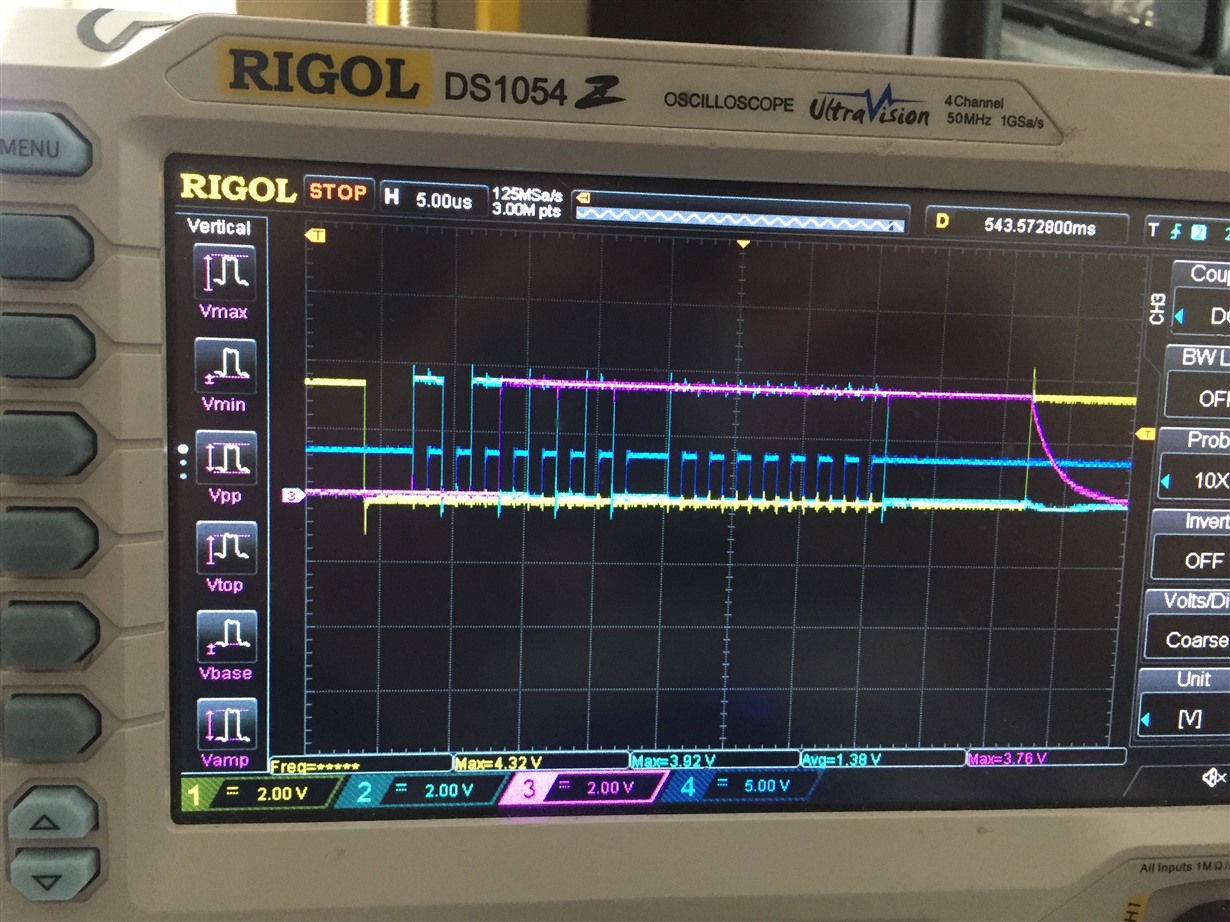Tool/software: TI C/C++ Compiler
Hello,
I am having an issue capturing all 14 bits over spi using the wiringPiSpi Library.
Here is my code:
here are the oscope readings (Yellow: CS, Blue: Sent bits, DarkBlue: Clock, Purple; received bits)
P.S. The vin is tied to vref so i should be getting 0011 1111 1111 1111 incoming.
P.S.S. it seems that the adc is looking for 1 more clock cycle but non of the mode (0-3) have worked. And it seems mode 3 is the closest to what the datasheet wants.
And here is what I am reading in on the Pi:
Let me know what you think,
And thanks in advance!
Best,
-Danny




